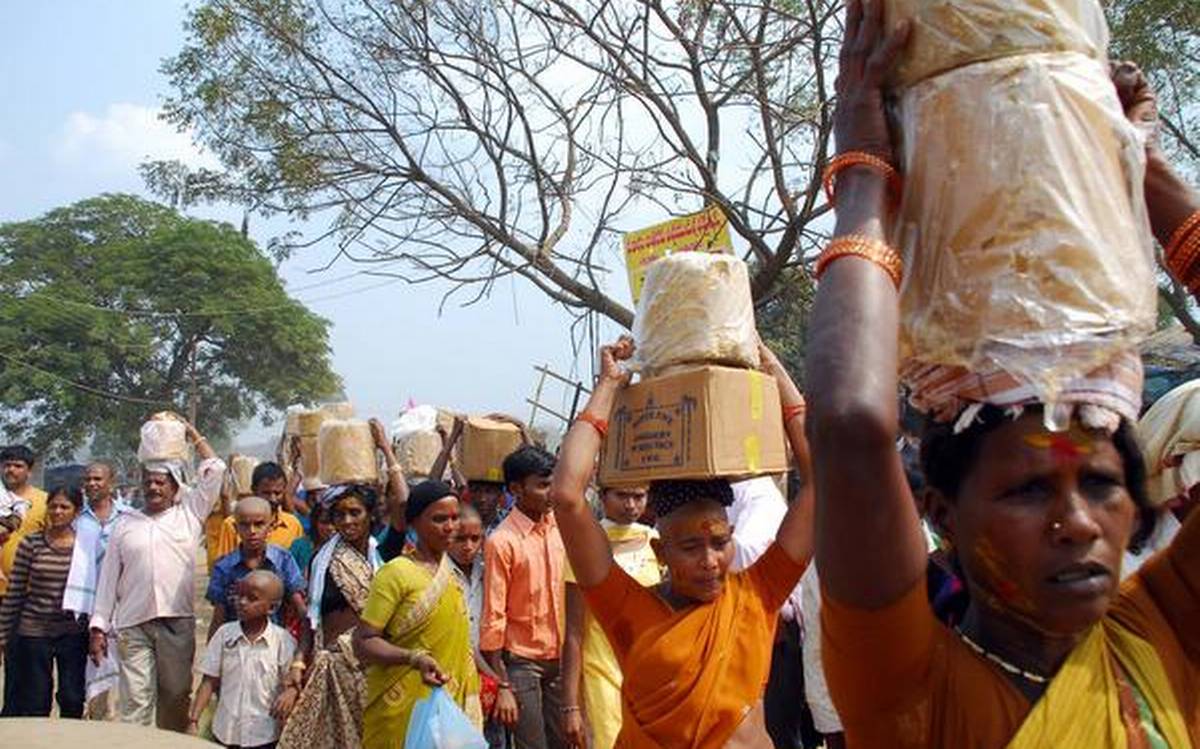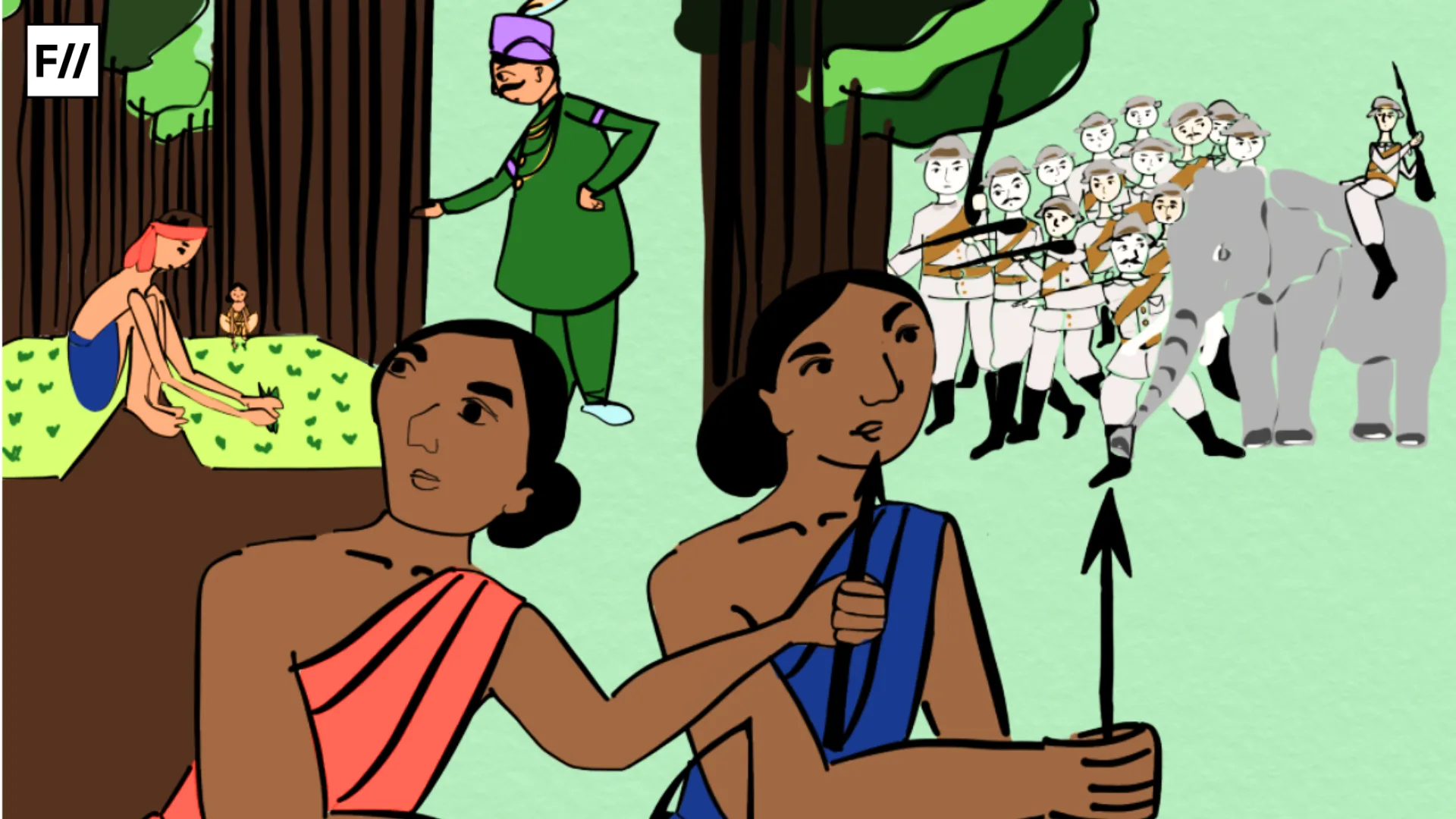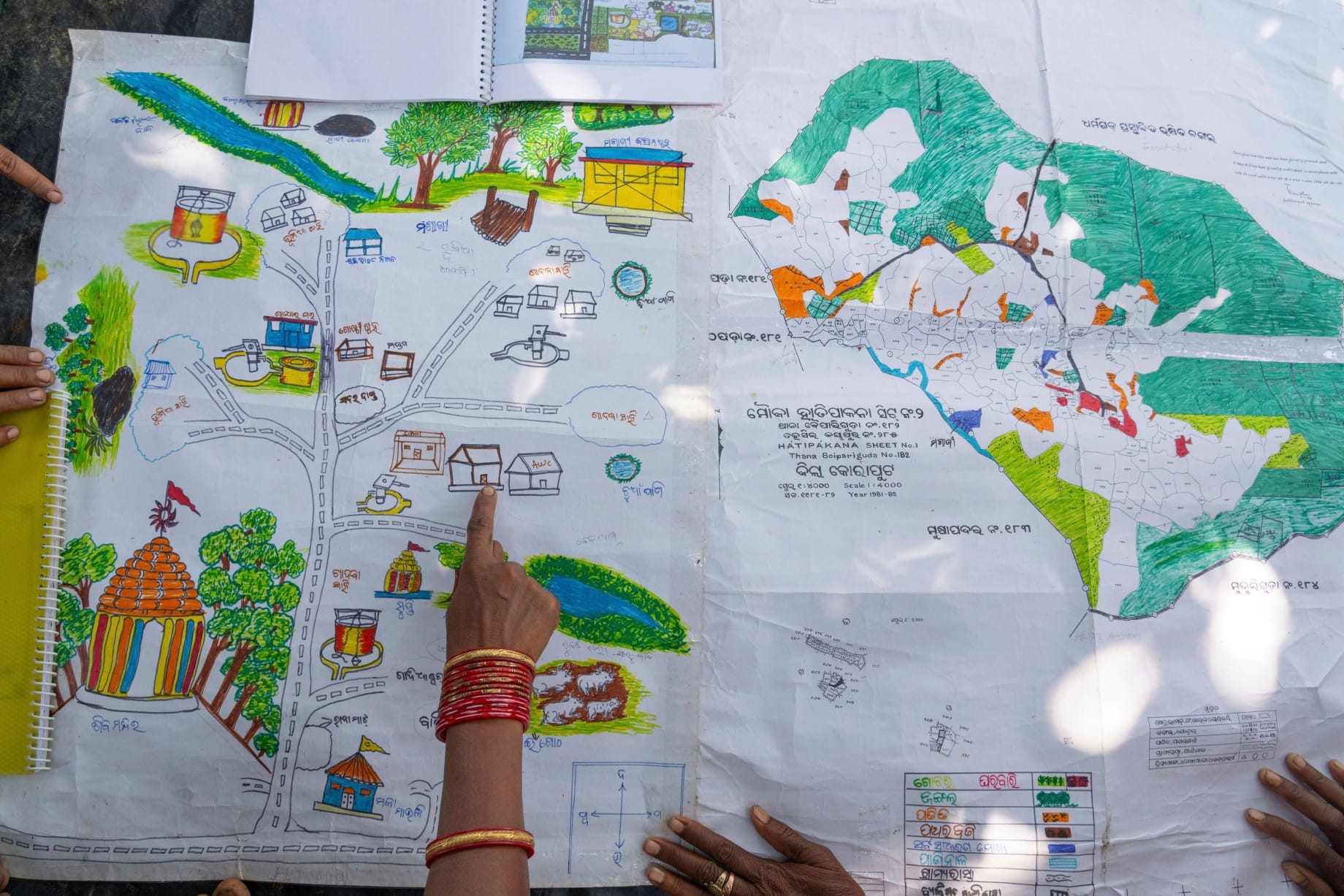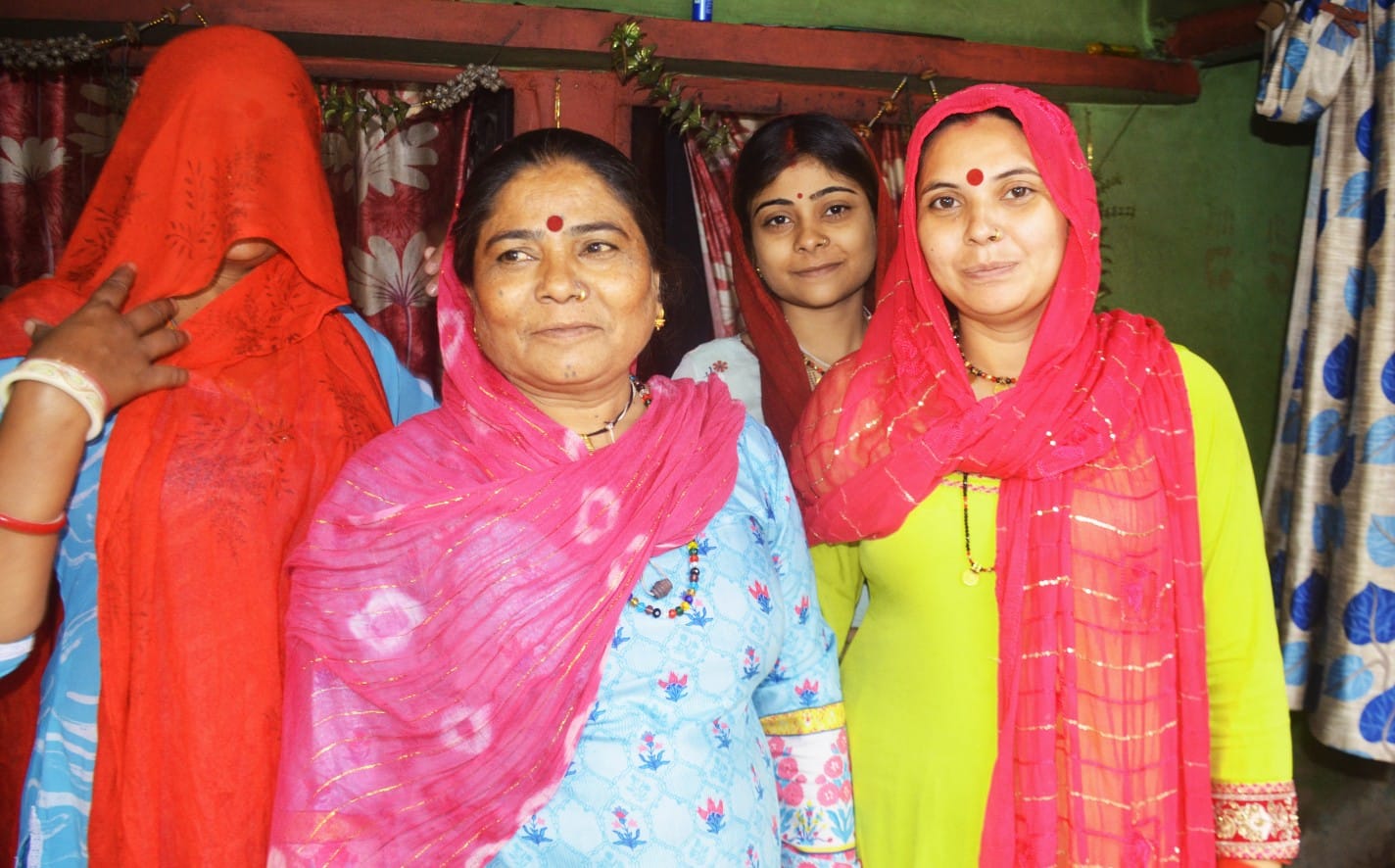A biennial (takes place every two years) jatara (carnival/ fair) is organised honouring tribal leaders Sammakka and her daughter Saralamma or Sarakka of the Koya tribe, who fought against the Kaktiya kingdom. The four-day jatara held in Medaram village, Telangana, commemorates the fight against the unjust Kaktiya rulers. This is the second-largest religious gathering in India after the Kumbh Mela with over one crore people gathering to offer their prayers. The Koya tribe makes up to 2% of the people gathering at the jatara. In 1995, the jatara was declared a state festival and there’s now push to declare it a national festival.

The Legend
According to folklore, on a moonlit night in the 13th century, a group of hunters from the Koya tribe in the Dandakaranya forest, found a newborn girl. She was found emitting light/glowing and playing amidst a streak of tigers. The hunters took her from the tigers and back to their settlement. The head of the tribe adopted her and named her Sammakka. It is also said that she had healing powers. She was married to Pagididda Raju, a Koya feudatory tribal chief. They had three children, two daughters and a son, Sarakka, Nagulamma and Jampanna.
Pagididda Raju had to pay regular taxes to the Kakatiya kingdom, who ruled Warangal in that period. A severe drought made it impossible for tax payment, but King Pratapa Rudra was adamant. He sent his army to intimidate and extort taxes from the Koya tribe. “The Kakatiya rulers sent their army to fight the Koyas who were no match for the better equipped and disciplined Kakatiya army,” said (to The Hindu) Jayadheer Tirumala Rao, an academic who has collected the oral histories of the Koyas.
A biennial (takes place every two years) jatara (carnival/ fair) is organised honouring tribal leaders Sammakka and her daughter Saralamma or Sarakka of the Koya tribe, who fought against the Kaktiya kingdom. The four-day jatara held in Medaram village, Telangana, commemorates the fight against the unjust Kaktiya rulers.
A fierce battle took place on the banks of Sampangi vagu (stream), a tributary of Godavari river. Pagididda Raju, his daughters and son-in-law Govinda Raju (husband of Sarakka) were killed. Sammakka’s son bled to death in the Sampangi vagu (stream), turning it red and was henceforth called Jampanna Vagu. Hearing the news, Sammakka entered the war and fought until the Kaktiya army started retreating. Stunned by her, a Kakatiya minister visited her with a peace treaty and offered her a place in the emperor’s harem as the chief queen. She rejected the offer and continued the war, only to be seriously injured in the battle.
She cursed the Kakatiya dynasty to perish, moved towards the forest, where she disappeared. The Koyas searched for their queen, but all they could find were a red ochre box containing vermillion, her bangles and the pug marks of a tigress. Incidentally, this was at the same place where she had been found as an infant, decades ago. The Kakatiya dynasty came to an end within the next few decades. The legend is passed down oral lore among the Koya tribe.

The Jatara
The jatara spans over four days, the first day marks the arrival of Saralamma from Kannepally (village) to the gadde (a high raised platform made of soil), in Medaram. The second day marks the arrival of Sammakka from Chilakala Gutta(village). Devotees offer their prayers to the goddesses on the third day by offering Bangaram which is bellam or jaggery, in their weight. But before the offering, they bathe in the Jampanna Vagu by stepping into the stream or the treated water pumped from it. The last day marks the return of the goddesses to the forest, “Sammakka Saralamma Vanapravesham (forest entry)”. It is believed that a tiger walks around the areas around the forest after the goddesses are left behind.
The festival till 1955 had only two thousand devotees, while the jatara in 2020 February had over 1.3 crore devotees assemble. Telangana Governor Tamilisai Soundarajan, Chief Minister K Chandrasekhar Rao, and Himachal Pradesh Governor Bandaru Dattatreya offered their prayers during the festival in 2020.
The goddesses are not represented with idols, but bamboo shoots covered in turmeric and vermillion and draped in sarees to represent Sarakka and Sammaka, respectively. Devotees offering bellam and coconut, hurl it towards the gadde (paddy field, farm) where the goddesses are seated, sometimes even causing injuries which led to the setting up of a health centre. Priests wear helmets, hard hats and other protective gear for the same. The prayers are offered and worshipped by priests from the Koya tribe. The festival till 1955 had only two thousand devotees, while the jatara in 2020 February had over 1.3 crore devotees assemble. Telangana Governor, Tamilisai Soundarajan, Chief Minister, K Chandrasekhar Rao, and Himachal Pradesh Governor, Bandaru Dattatreya offered their prayers during the festival in 2020.
Considered to be the largest tribal gathering in Asia, Sammakka Sarakka Jatara, is threatened by Hinduisation. The state government declared the jatara a state festival in 1999 laid roads to Medaram, making the village accessible to devotes via road transport and built infrastructure to make it more accessible. It has led to a decrease in forest cover and disrupted the natural environment. The biggest fear held by the tribal community is of cultural appropriation and erasure of what is a tribal celebration.
Kumbha Mela, in 2017 joined UNESCO’s list of Intangible Cultural Heritage (ICH) elements of India, and the jatara is being pushed as a consideration. The question is, will this nationalisation be the end of an indigenous celebration?
Featured Image Source: The Hindu
About the author(s)
A freelance photographer & writer who drinks too much coffee.




